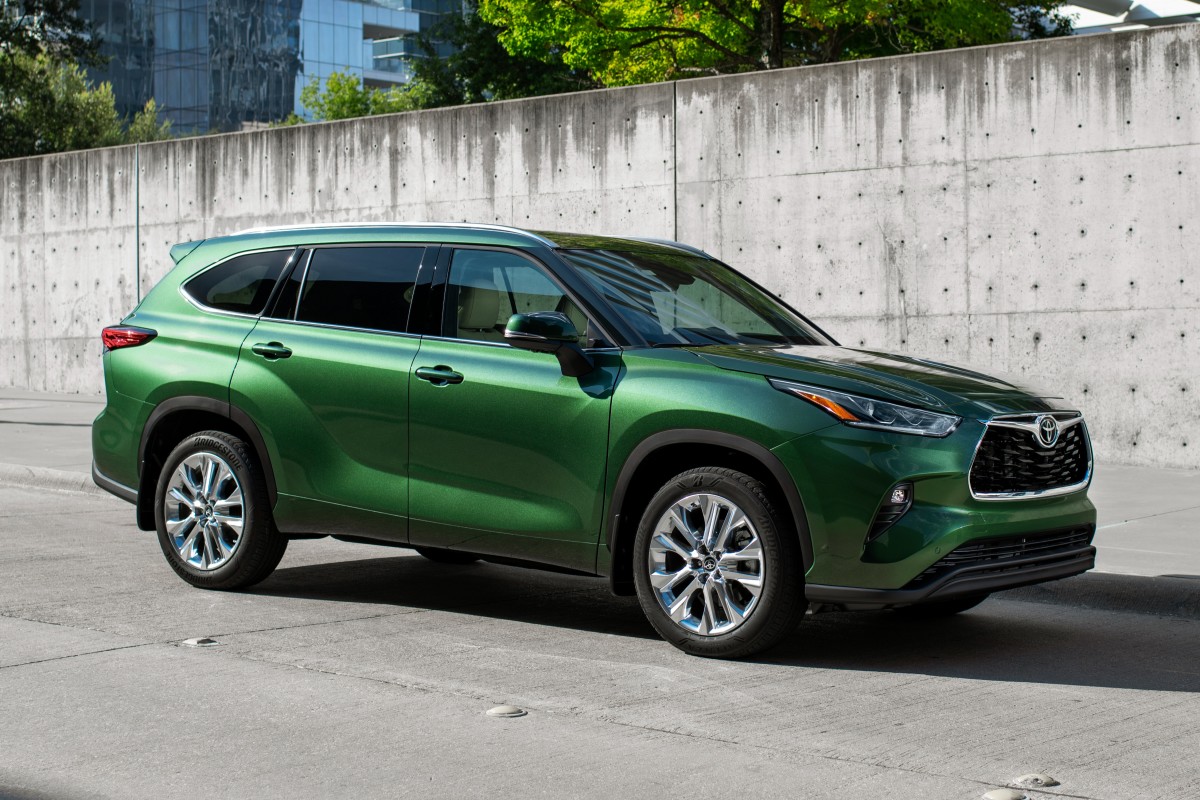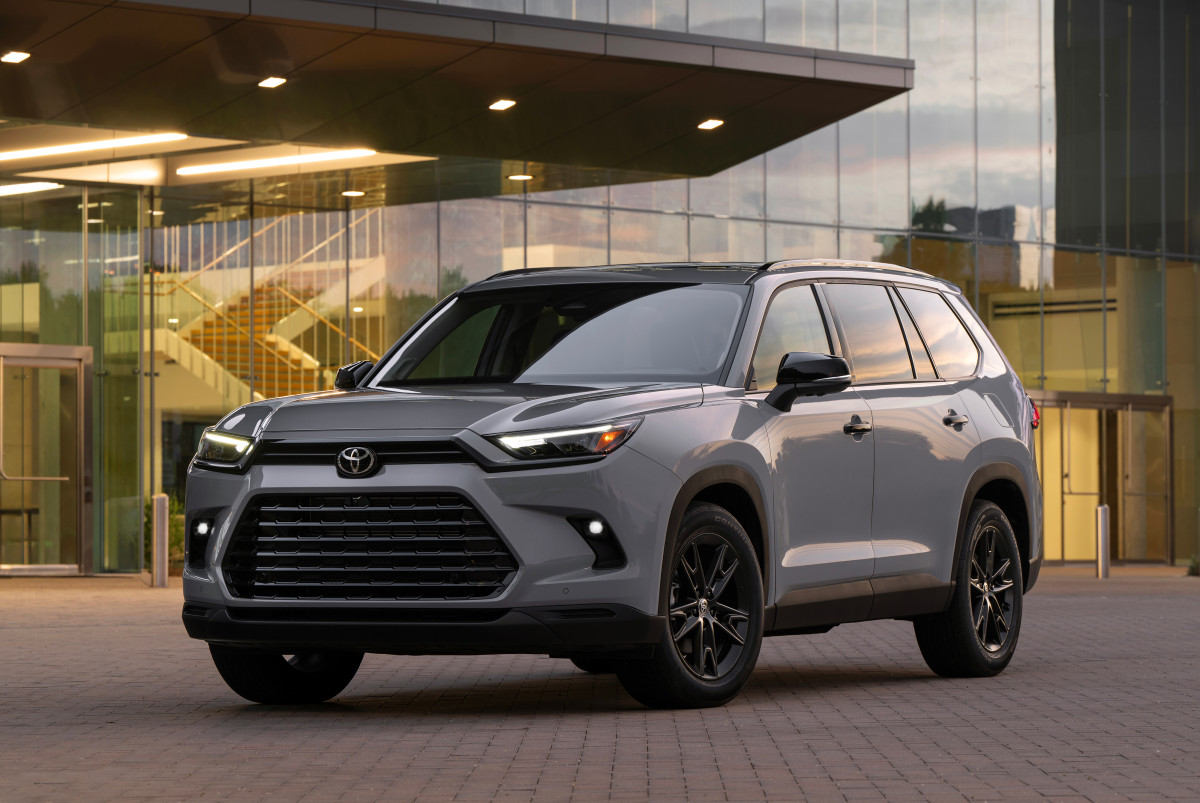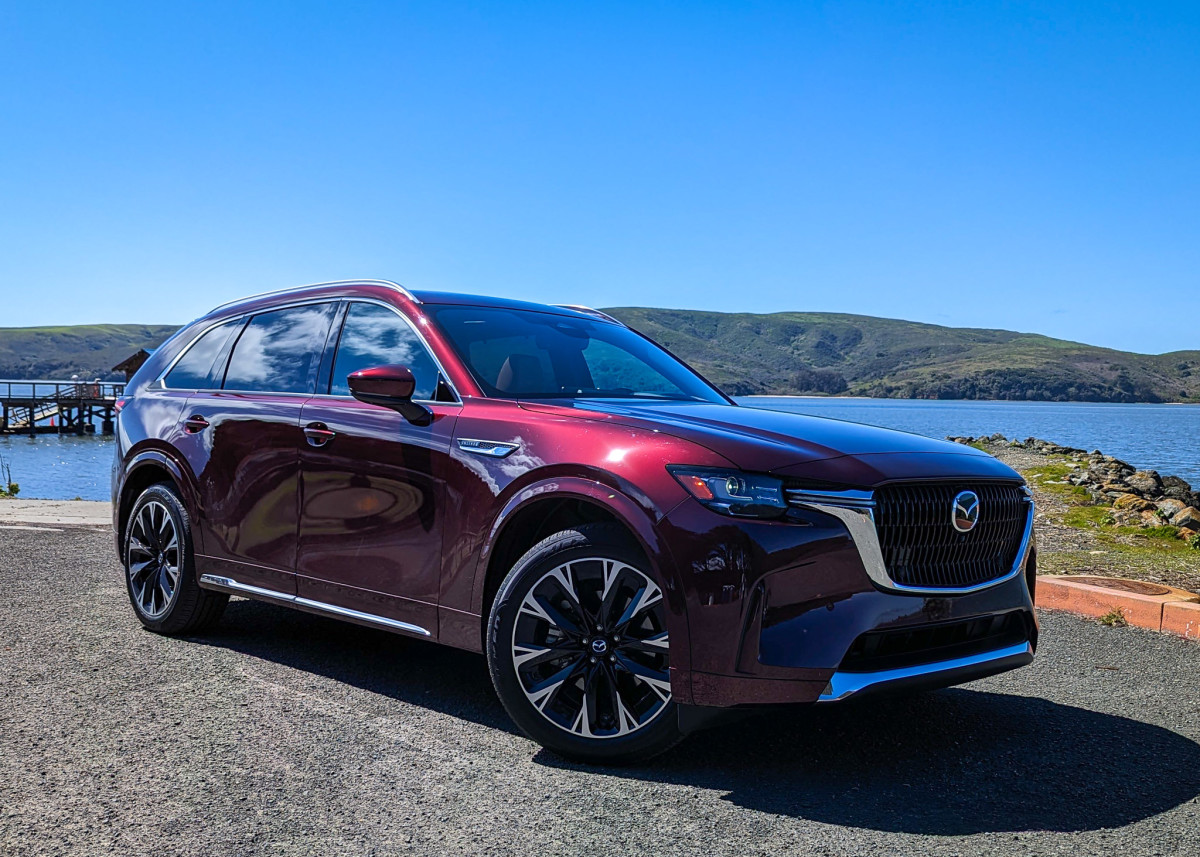The XC90 has been Volvo’s flagship SUV and a standout in the luxury midsize SUV market since its 2003 debut. Renowned for its innovative safety features, elegant Scandinavian design, and family-friendly practicality, the XC90 has been a strong choice for those seeking luxury and versatility. It has evolved over the years, incorporating cutting-edge technology, increasingly efficient powertrains, and refined interiors that now rival the best in the segment.
The XC90 sits above the Volvo XC60 in the manufacturer’s SUV range appeals to a diverse range of buyers, from those needing a family car with three rows of seats to professionals looking for a sophisticated but practical vehicle, and perhaps an alternative to established German rivals, such as the BMW X5, the Audi Q7, the Mercedes-Benz GLE—or even the Lexus RX, and the Land Rover Discovery. It isn’t exactly geared for off-road duties, but the XC90 has carved its own niche as a stylish, safety-focused, and eco-conscious SUV.
Volvo XC90 Buying Guide: Cost, Reliability and the Best Years to Buy
- Frequently Asked Questions
- Volvo XC90 Pros and Cons
- Volvo XC90 Generations
- Second Generation (2016-)
- First Generation (2003-2014)
Frequently Asked Questions
Which Volvo XC90 years are the best?
Second generation Volvo XC90s onwards—essentially anything built from 2016—are generally regarded as the best. The revision of the original car introduced a more modern design, more advanced safety tech, and fuel-efficient powertrains, including hybrid options to raise MPG. Cars built from 2020 are particularly appealing for their refreshed infotainment system and additional standard features.
What are the worst Volvo XC90 years?
The earliest XC90s, produced between 2003 and 2006, were the worst, as they suffered from reliability issues with the transmission, the suspension, and the electronics, among others. While these models were groundbreaking at the time, the oldest have now seen more than two decades of use and may need extensive repairs, not just because of age but also because of design flaws in key components.
Is the Volvo XC90 a good deal?
A used Volvo XC90—particularly second-generation models— can be great used deals, offering a luxury driving experience at a fraction of the price of a new counterpart. That said, buyers should be prepared for the typically higher maintenance costs associated with European luxury used cars. It might be worth considering a certified pre-owned (CPO) XC90 for added peace of mind.
Volvo XC90 Pros and Cons
Pros:
- Elegant design inside and out
- Advanced safety features
- Spacious and comfortable
Cons
- Potential for high maintenance costs
- Base models are underpowered
- Reliability issues with older models
Volvo XC90 Generations
Second Generation (2016-)
Introduced in 2015 for the 2016 model year, the new Volvo XC90 represented a complete overhaul, sharing nothing with its forebears. The new car brought sleek, minimalist design language and a host of advanced technologies to inform, entertain, and keep occupants safe. The interior has a far more luxurious layout, with a vertical touchscreen infotainment system (with Apple CarPlay and Android Auto functionality) and top-quality materials, while accessibility is superb. There’s a decent amount of space for passengers in the second row of seats, and even those in the third row, which Volvo claims will comfortably accommodate those up to 5’7” tall. Some versions have a crystal gear shifter made by Swedish glassworks company Orrefors, adding an extra layer of luxury.
Several powertrain options are available. The T5 uses a turbocharged, 2.0-litre, four-cylinder engine with 250 horsepower, while the Volvo XC90 T6 is “twincharged”—turbocharged and supercharged—to boost the power of the engine to 316 horsepower. A plug-in hybrid model is also available, called the T8 Twin Engine, which mates the T6 unit to an electric motor to provide up to 400 horsepower and impressive fuel economy. Unlike the first generation, which had some front-wheel drive (FWD) models, all the US-bound second-gen XC90s are all-wheel drive (AWD).
The second-generation XC90’s suite of safety technologies includes City Safety, Pilot Assist for semi-autonomous driving, and a 360-degree camera system. The car was given a mid-cycle refresh in 2020, adding mild-hybrid drivetrains and an improved infotainment system. A second facelift was brought in at the end of 2024 for the 2025 model year, with a redesigned fascia with new headlights and grille, and another new upgrade for the touchscreen infotainment system. A panoramic sunroof is now standard, and, for audiophiles, a Harman Kardon premium sound system is included with the top-end Ultra trim. As you’d expect, the likes of four-zone climate control, cross traffic alert, adaptive cruise control, and leatherette upholstery are standard on XC90s of today, while air suspension is optional.
Volvo XC90 trim levels include the entry-level Volvo XC90 Momentum, the sporty Volvo XC90 R-Design, and the luxurious Volvo XC90 Inscription, while plug-in hybrid models are badged as Volvo XC90 Recharge. Depending on the year, the line-up could also include the Volvo XC90 Core, the Volvo XC90 Plus and the Volvo XC90 Ultimate trim.
The second-generation Volvo XC90 has generally proved reliable, but potential issues to watch out for include premature battery wear in plug-in hybrid models and minor glitches with the infotainment system. As always, regular maintenance is essential, especially on the more complicated XC90 T8 plug-in hybrids (PHEVs).
Very high-mileage examples of early Volvo XC90s can be found for as little as $10,000, while you can expect to pay from $16,000 for a 2016 model with less than 70,000 miles. Newer models ramp up the price up, so expect to pay from around $29,000 for a 2020 model. Facelifted hybrids from 2020 onwards cost from around $30,000 while nearly new models from 2024 onwards start at around $36,000. At the time of writing, the MSRP for an entry-level Volvo XC90 started at $59,745.
First Generation (2003-2014)
The first generation of the Volvo XC90 was something of a trailblazer in the midsize luxury SUV segment. Unveiled in 2002 for the 2003 model year, it was rugged, yet elegant, loads of space in the front seats and the rear seats, and boasted the trademark reputation for safety that has defined Volvo cars for decades. Early models were powered by either a 2.5-liter turbocharged, five-cylinder engine with 208HP or a 2.9-liter six-cylinder turbo, badged as the T6, with 268HP. Later, a 3.2-liter inline six was added to the line-up, as was a 311-horsepower, 4.4-liter V8 developed with Yamaha.
Most versions had a five- or six-speed automatic gearbox, although early T6s had a four-speed auto that was prone to weakness, as they were unable to reliably handle the engine’s power.
Taking on the likes of the BMW X5 and the Mercedes-Benz ML-Class, the XC90 was one of the first SUVs to include advanced safety systems such as Roll Stability Control (RSC) and side-curtain airbags for all three rows. Practical touches, such as a split-folding tailgate and flexible three-row seating arrangements, made it a versatile choice for families, but it was upmarket inside with soft-touch materials and leather seats.
A facelift came in 2007, with subtle but useful updates that improved refinement. It had exterior tweaks and a new grille, updated head- and taillights and new alloy wheel designs, as well as improved interior materials and a revised dashboard layout, which now hosted an improved infotainment system. The introduction of a Blind Spot Information System (BLIS) only further enhanced the XC90’s reputation for safety.
Another update followed in 2012, with body-coloured plastic replacing black cladding and LED running lights for a more modern look.
Aside from age—even the newest first-gen XC90s are now more than a decade old—buyers need to be aware of a few different core reliability issues. Very early models, from 2003 to 2006, were particularly prone to problems that can prove costly to fix. The four-speed transmission in T6s is a common failure point, and suspension components such as control arms, ball joints, and bushings are notorious for premature wear, which can result in uneven tire wear and excess noise that you’ll notice on a test drive. Look out, too, for electric issues on any older Volvo XC90 for sale, with glitching displays, sensors and climate control systems. Some models also suffer from oil leaks in the engine bay, so take a good look around before you buy.
Find a solid one, and a first-generation XC90 is a very affordable way into luxury SUV ownership. You’ll be able to find early models for just a couple of thousand dollars, although lower-mileage examples tend to start from around $5,000, rising to around $15,000 for newer, top-of-the-line models.




